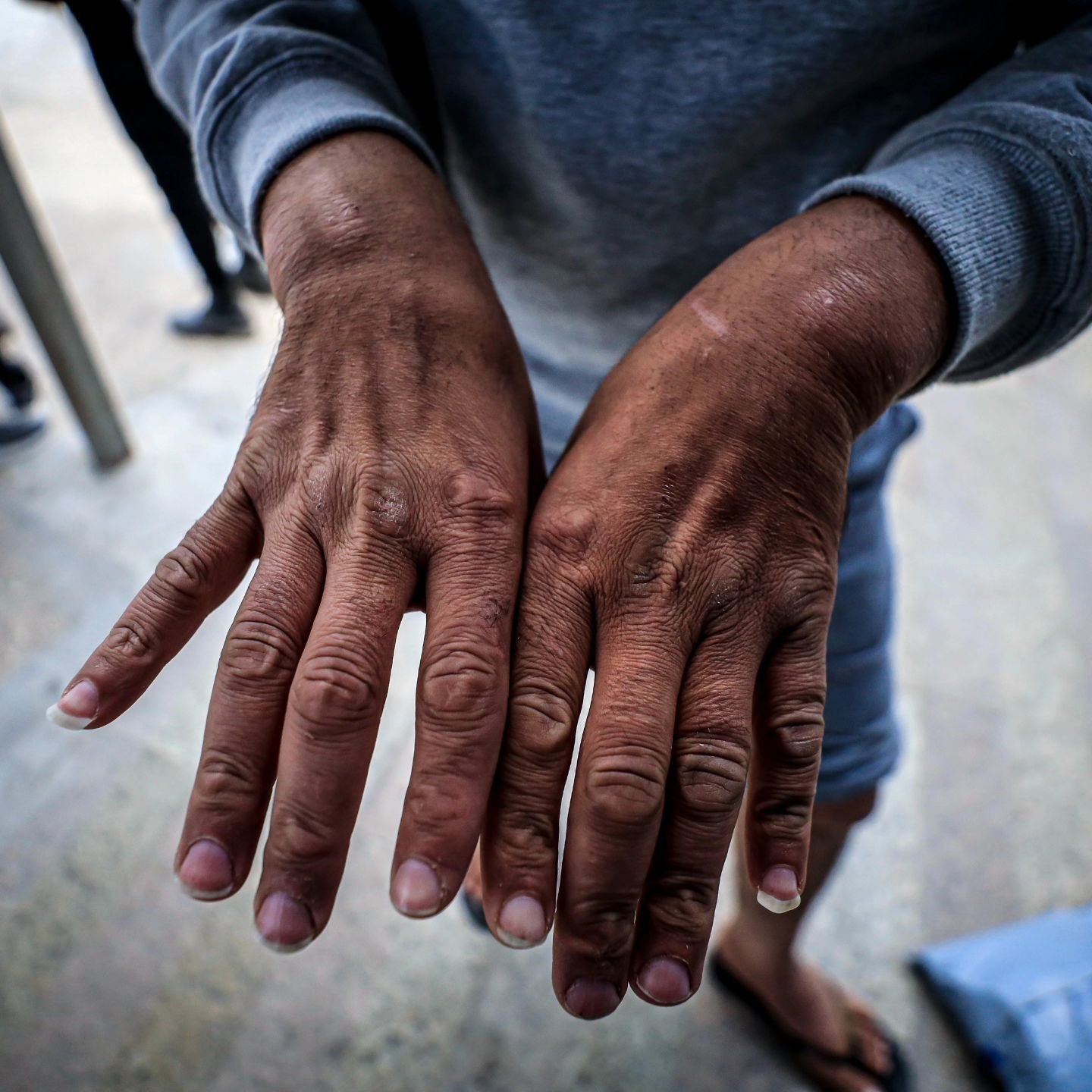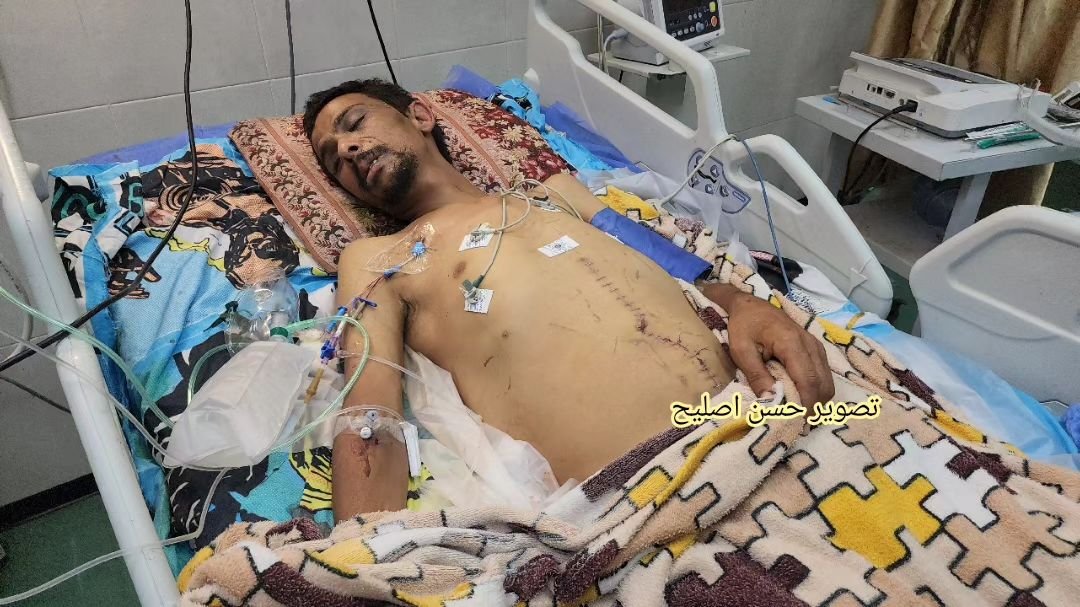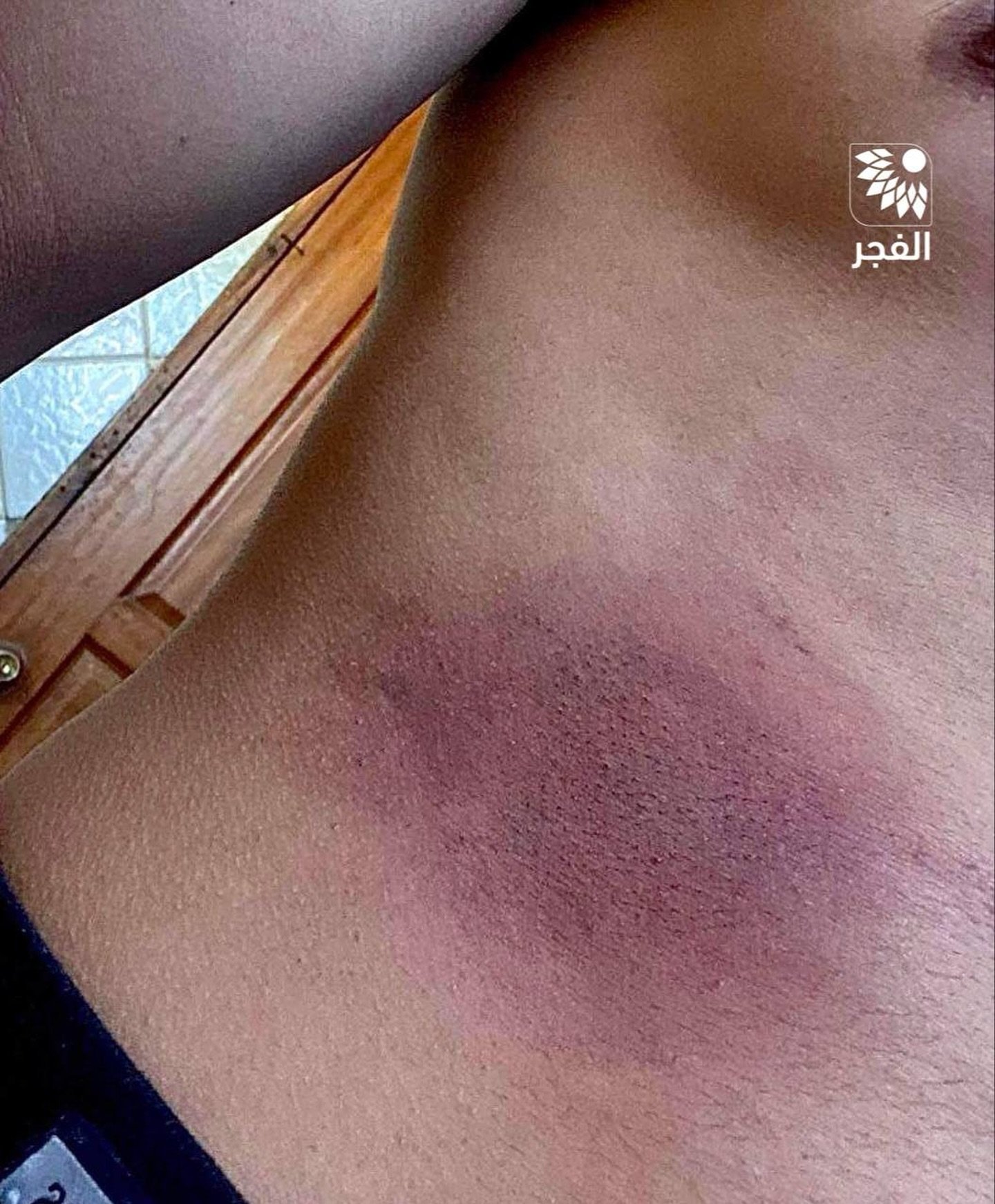
Torture
Breaking the Silence
Harrowing Accounts of Torture in Israeli Prisons
Reports of widespread systematic torture in Israeli prisons have sparked intense scrutiny and outrage from human rights organizations globally. Reports detail harrowing accounts of physical and psychological abuse inflicted on detainees, including stress positions, solitary confinement, and deprivation of basic needs. Such practices, reportedly aimed at extracting confessions or information, raise grave ethical questions about the treatment of individuals detained, particularly during times of armed conflict. The implications of these allegations extend beyond individual stories, challenging the very foundations of justice and human rights standards internationally.
The Sarkha Project has meticulously collected a substantial body of evidence, including videos, images, testimonies, and reports, revealing a systematic practice of torture employed by Israeli soldiers, commanders, interrogators, and prison guards. The evidence demonstrates that these authorities frequently utilize a range of torture methods that extend far beyond mere mistreatment. Such practices are employed as a deliberate form of punishment, humiliation, and information extraction from civilians in Gaza and the West Bank. Alarmingly, these inhumane tactics do not exclude the most vulnerable members of society; elderly individuals and young children are also subjected to these severe violations of human rights.
The methods of torture most frequently reported by victims include:
Starvation
Branding the Star of David into the skin
Severe beatings: Victims have described being beaten for hours at a time, multiple times each day
Electroshock
Forced stress positions: Individuals have been compelled to maintain stress positions for extended periods, sometimes lasting hours or even days
Rape: This includes assaults involving metal rods and fire extinguishers (causing death in some cases)
Sleep deprivation
Sensory overload
Waterboarding
Animal attacks: Victims report being attacked by large dogs, with some instances involving sexual assault by dogs
Mock executions
Actual executions
Severe Psychological torture: Convincing the victim they are already dead or that their family is dead by showing the fake photos
Physical restraint: Victims have been tied up or hung by their legs
Humiliation: Some have described being urinated on by soldiers and settlers
Amputations: These have occurred due to zip ties being left on for extended periods
Medical neglect: This has led to preventable deaths among detainees
Public Humiliation: Subjecting victims to acts that degrade them publicly, causing emotional and psychological harm.
Not allowed to Pray
Not allowed to use the toilet. In some cases the victim is chained to a bed and forced to wear a diaper.

Photo by Mohamed Al Masri

Photo by Amjad Al Fayoumi

Photo by Mohamed Al Masri

Photo by Hassan Aslih

Source: Izzat Karaki


Video by Abdal Qader A Sabbah

Photo by Mohammad Nazzal

Video by Ramy Toima

Photo by Rama Yousef

Photo by Rama Yousef

Photo by Hani Alshaer

Photo by Hani Alshaer

Photo by Hani Alshaer

Photo by Hani Alshaer

Photo by Hani Alshaer

Photo by Hani Alshaer
Throughout history, torture has emerged as a brutal tactic during armed conflicts, ethnic cleansing, and genocides, revealing the darkest sides of humanity. In the late 20th century, the Rwandan Genocide proved chilling, where Hutu extremists employed unimaginable brutality against Tutsi civilians, rife with acts of torture that served to instill fear and assert dominance. Similarly, during the Bosnian War in the 1990s, the systematic use of rape and torture by Serbian forces not only aimed to dehumanize the Bosniak population but also sought to erase their identity through horror. The Khmer Rouge's reign of terror in Cambodia left a legacy of suffering, where torture was institutionalized at places like Tuol Sleng, reflecting a calculated effort to eliminate dissent and reshape society through grueling persecution. These historical examples serve as stark reminders of the lengths to which humanity can descend, revealing the urgent need for vigilance against such atrocities.
Torture has long been a tool of oppression, with methods that chill the spine and haunt the conscience. One of the most common forms is waterboarding, a savage technique that simulates drowning, allowing the victim to experience the desperate panic of an imminent death. Then there's the electric shock, where currents are applied to sensitive areas of the body, leaving both physical and psychological scars. Stress positions, employed as a method of torture, are designed to induce extreme discomfort and pain through the manipulation of the body’s natural posture. By forcing individuals into unnatural positions for prolonged periods, captors exploit the limits of human endurance, leading not only to physical agony but also to psychological degradation.
Sensory deprivation and sensory overload serve as stark, contrasting methods of torture, each designed to fracture the psyche in its own insidious way. In sensory deprivation, the absence of sound, light, and tactile stimuli strips individuals of their connection to the outside world, plunging them into an overwhelming void that breeds fear and paranoia. The mind, desperate for stimulation, can spiral into tormenting illusions, rendering the victim helpless against their own thoughts. Conversely, sensory overload bombards the senses to the point of chaos; incessant noise, blinding lights, and harsh textures create a cacophony that shatters focus and induces panic. This relentless barrage exhausts the victim, drowning any semblance of rational thought and leaving them grasping for relief in a world that feels violently agitated.
Waterboarding: Simulating drowning by repeatedly pouring water over a cloth covering the victim's face.
Electric Shock: Applying electric currents to sensitive areas of the body to induce severe pain.
Stress Positions: Forcing victims to hold uncomfortable or painful positions for extended periods.
Sensory Deprivation: Isolating individuals in dark, soundproof environments to induce psychological distress.
Burning: Inflicting pain through fire or extreme heat, often through cigarette burns or heated objects.
Mock Executions: Creating a scenario that simulates execution to instill fear and terror.
Isolation and Solitary Confinement: Keeping an individual isolated from all human contact, leading to emotional and psychological suffering.
Ritualistic Torture: Subjecting victims to torture methods tied to cultural or religious beliefs, often adding a psychological layer to the pain.
Genital Mutilation: Causing severe damage to the genitalia to inflict pain and humiliation.
Breaking Bones: Using physical force or devices to fracture bones, causing extreme pain and physical trauma.
Psychological Manipulation: Utilizing fear tactics, threats, and coercion to inflict mental harm without physical violence.
Starvation: Inflicting torture by depriving individuals of food for prolonged periods, leading to physical and mental degradation.
Public Humiliation: Subjecting victims to acts that degrade them publicly, causing emotional and psychological harm.
Sexual violence: Sexual violence encompasses a range of behaviors including rape, sexual assault, and harassment, inflicted upon individuals through force, coercion, or manipulation.
Torture, under international humanitarian law, is defined as any act by which severe pain or suffering, whether physical or mental, is intentionally inflicted on a person for purposes such as obtaining information, punishment, or intimidation. This definition is grounded in various legal frameworks, notably the United Nations Convention Against Torture, which prohibits torture and cruel, inhuman, or degrading treatment or punishment in all circumstances. The unequivocal stance of international law against torture reflects a commitment to human dignity and the protection of fundamental rights.
The prohibition of torture is a cornerstone of international law, firmly established in both the Rome Statute and the Geneva Conventions. Under Article 7 of the Rome Statute of the International Criminal Court, torture is classified as a crime against humanity when committed as part of a widespread or systematic attack directed against any civilian population. This highlights the severity with which the international community views the act of torture, reflecting a collective commitment to uphold human dignity and rights.
The Geneva Conventions, particularly Common Article 3, explicitly prohibit torture and inhumane treatment of individuals not only in armed conflict but also in all forms of detention. This includes protections for those who are hors de combat (out of the fight), ensuring that all individuals are treated humanely, without adverse distinction based on race, nationality, religion, or any other status.
By codifying the ban on torture, these legal frameworks assert that no exceptional circumstances—whether in times of war, threat of war, internal political instability, or any other public emergency—can justify the inhumane treatment of individuals. The commitment to these principles is vital for maintaining the rule of law and ensuring accountability for those who would resort to torture, reinforcing the message that torture is utterly intolerable and will not be tolerated in any form.
The severity of torture is generally assessed based on the physical and psychological harm, the method used, the duration, and the intent behind the act. International tribunals and conventions recognize varying degrees of severity, often distinguishing between torture and cruel, inhumane, or degrading treatment.
The documentation amassed by the Sarkha Project underscores the urgent need for accountability and justice for the victims of these acts. Our commitment to exposing these human rights violations serves not only to highlight the plight of those affected but also to advocate for systemic change. By presenting a comprehensive analysis of the torture methods employed, we seek to inform the international community of the ongoing crisis and galvanize support for measures that will protect the rights and dignity of all individuals in these regions.
Sarkha Project is currently engaged in the meticulous processing of evidence pertaining to documented incidents of torture; however, we recognize the urgency of your request. Accordingly, we invite you to submit an evidence request in advance. While we are unable to provide immediate access to the processed materials, we assure you that once the analysis is complete and the evidence is validated, we will promptly fulfill your request. This procedure underscores our commitment to ensuring that all disseminated information adheres to our rigorous standards of accuracy and integrity
The images displayed in the gallery above are not owned by Sarkha Project and are used solely for educational and informational purposes related to the documentation of human rights violations. If you are the copyright holder of any image and wish to have it removed, please contact us directly, and we will promptly address your request. All efforts have been made to credit the respective owners, and we respect all copyright laws.